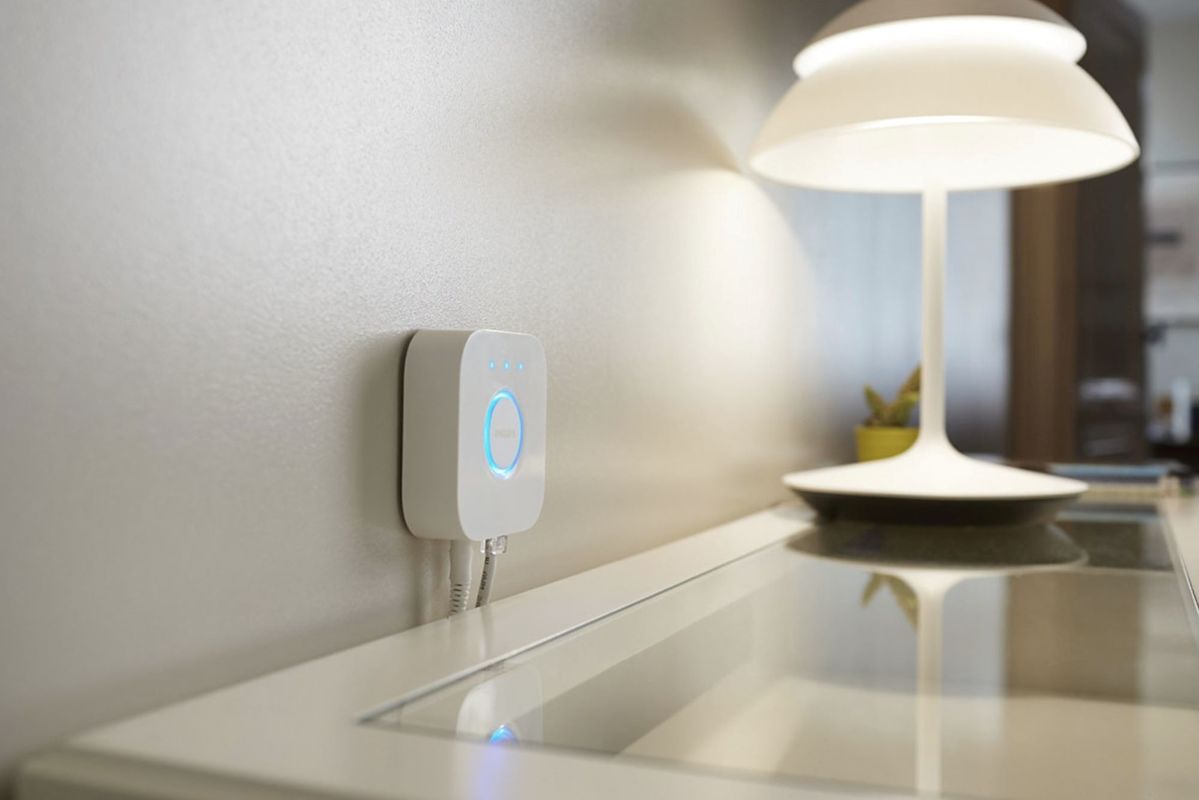One of the most frequent questions we get asked here at TechHive is whether you really need a hub to use Philips Hue bulbs. The answer? No, you don’t. But there are plenty of reasons to spring for a hub anyway.
As recently as two years ago, Philips Hue bulbs only supported the Zigbee wireless protocol, which meant you needed the Zigbee-enabled Hue Bridge ($60, although it’s often included in discounted Hue bundles) to connect Hue bulbs to your home wireless network.
All that changed, however, with the mid-2019 debut of Hue bulbs that supported Bluetooth as well as Zigbee. Thanks to the addition of Bluetooth, supported Hue bulbs can be controlled directly from Bluetooth-enabled iOS and Android devices, no hub required.
Philips Hue has gradually rolled out more Bluetooth- and Zigbee-equipped bulbs over the past couple of years—and indeed, all new Hue lighting products support the two wireless protocols. Note, however, that this is not the case for hardwired indoor and outdoor Hue lighting fixtures, aka luminaires.
With help from the Hue Bluetooth app, you can turn Bluetooth-enabled Hue smart lights on and off directly from your phone. You can also adjust their brightness, change lighting scenes, and even control them with Alexa and Google Assistant voice commands.
But while you can control newer Hue bulbs using Bluetooth rather than a Hue Bridge, there are plenty of reasons why you might eventually change your mind (and yes, you can change your mind later). Here are the four biggest ones.
You’ll only be able to control up to 10 bulbs
While a Hue Bridge can control up to 50 Hue lighting products, the Hue Bluetooth app only lets you control a total of 10 Hue lights.
That cap on the number of Hue bulbs you can control via Bluetooth might be fine if you’re just getting started with Hue smart lights, but it’ll start to cramp your style if you want to expand your Hue lighting setup to more rooms in your home.
You’ll need to be in the same room
One of the beauties of Hue light control using a bridge is that you can control your bulbs from practically anywhere.
For example, you can use the Hue app to turn your basement lights on while you’re in the kitchen, or (provided you’ve enabled “out of home” control) from anywhere on the planet with an internet connection.
Bluetooth-controlled Hue lights, however, can’t be contacted over the internet, and because Bluetooth has range of only about 33 feet, you’ll likely need to be in the same room as your Hue bulbs to control them.
 Signify
SignifyYou can control the latest Philips Hue smart lights without the Hue Bridge (pictured), but you’ll need to settle for a series of limitations.
You can’t group bulbs together
Bridge-controlled Hue lights can be grouped into either “rooms” or “zones,” which means you can control all the bulbs in (say) your bedroom simultaneously, or you could even set lighting scenes for multiple rooms that you can trigger via the Hue app or with voice commands.
The Hue Bluetooth app, however, doesn’t support grouping at all. So while you will be able to power individual Bluetooth-controlled Hue bulbs on and off, adjust their brightness, and apply lighting scenes, you won’t be able to control a roomful of Hue lights via Bluetooth at the same time.
You can only set up basic routines
Using the Hue Bridge, you can create elaborate schedules—or “routines”—for your Hue lights.
For example, you can set outdoor Hue lights to turn on at dusk and turn off at sunrise, or you can enable daily or weekday “wake up” and “go to sleep” routines that gradually dim your lights at bedtime and raise the brightness in the morning. You can even set the Hue app to automatically turn off the lights when you leave home and turn them back on when you return, while a “randomize” option turns your lights on and off at different times to fool potential trespassers while you’re away.
But while Bluetooth-controlled Hue lights have routines of their own, they’re seriously curtailed compared to those available on hub-controlled Hue bulbs. Sunset and sunrise triggers are out, as well as regular on/off schedules and those randomized vacation schedules.
Instead, you get “one-time” wake-up and sleep routines, which will slowly dim or brighten your Hue Bluetooth lights, but not on a daily or weekly basis; instead, you’ll need to enable the routines each time you want to use them.
There’s also a timer function that can perform various functions when the timer runs out; for example, you can set a Hue bulb to flash when the timer’s up, turn on or off, or change lighting scenes. You can tie this into timers running on your smart speakers as well.
Bottom line
Yes, you certainly can control Philips Hue bulbs without a hub, and if you’re just dipping your toes into the smart home market, controlling your Hue lights via Bluetooth is the easiest—and least expensive—way to start.
That said, if you want to take advantage of all the features that Hue lights have to offer, you really should spring for a Hue Bridge. Luckily, the Hue Bluetooth app makes it easy to move your lights over to the Hue Bridge if you eventually decide to upgrade.
Stay connected with us on social media platform for instant update click here to join our Twitter, & Facebook
We are now on Telegram. Click here to join our channel (@TechiUpdate) and stay updated with the latest Technology headlines.
For all the latest Technology News Click Here
For the latest news and updates, follow us on Google News.
